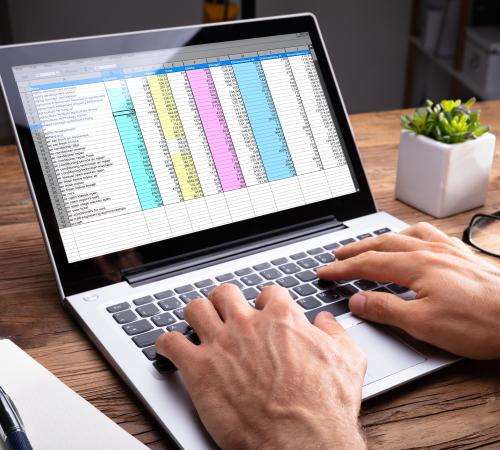

Business rates might not seem like an issue to trigger an uprising, but this year they have sparked outrage from high street shopkeepers and the Confederation of British Industry (CBI) alike.
The problem is that a wholesale revaluation of every commercial property in the country taking effect in April will mean thousands of businesses, large and small, will have to pay a lot more in rates.
You might be one of the small businesses that don’t pay business rates, because the rental value of your premises is below £6,000.
Or you might pay some, but have money knocked off your bills because you receive rate relief.
The revaluation means that many small businesses that were previously eligible for discounts on their rates will not qualify for them any more because their premises’ rateable value has soared. So you should find out where you stand.
A rise in the rate relief threshold
The Chancellor announced in the Budget that from April businesses whose properties have a rateable value of £12,000 or less will have to pay no rates – that’s around 600,000 small businesses, says the government.
These businesses will receive 100% rate relief, effectively cancelling out their bill. Those with premises with a rateable value of between £12,000 and £15,000 – another 50,000 small business – will get what’s known as ‘tapered relief’, a discount applied on a sliding scale according to your premises’ value.
But – and it’s a big but – you have to apply for small business rate relief from your local council to get this money knocked off your bill – it won’t automatically be taken off what you owe.
First, you need to know what your business’s rateable value will be from April 1.
Do you know what you owe?
Your rates are calculated according to how much someone would theoretically pay to rent your property – its so-called ‘rateable value’. The Valuation Office Agency (VOA), a government body, works out your rates by calculating your premises’ annual market rental value based on what is the going rate in your local area.
If you haven’t already found out how much your business rates will be from April then you can search for your premises using its address on the VOA’s online service (external link). If it isn’t on there, then you can calculate it yourself, using the simple steps on the government website (external link).
So what’s the problem?
Part of it is that it has been seven years since the last reassessment in 2010. The next one, which was due in 2015, was put back to this year, which has meant businesses are facing even bigger bills because of further increases in rental values. The government has said it wants to prevent this from happening again in future by having rate reassessments every three years.
Although the total amount raised from business rates is expected to be roughly the same as before – around £28 billion a year – there are some big winners and losers across the country. Some areas hit hard by the recession have seen their rents drop since 2010, while businesses in popular towns into which there’s been an influx of big-name chains have seen a big jump in their rental values.
Southwold, a pretty seaside town on the Suffolk coast, has been hardest hit. Its small shopkeepers are protesting at an average increase of 177% in their business rates, which they argue, threatens to ruin them. One calculated she would need to generate an extra £50,000 in sales each year to offset the hike in her rates (external link).
Rates are based on where your business is located, not what it does or how much money it makes. This can lead to anomalies.
For example, offices occupied by an accounting firm that I know on a busy road in a prosperous Essex town have a notional rental value per square metre which is more than double that of another accounting firm a few hundred yards along the same road. The reason is that the first accountancy’s offices are deemed to be in a prime retail location, whereas its near neighbour is situated just outside that zone.
The way the tax rate is calculated is also a problem, business groups like the Confederation of British Industry (CBI) argue.
The Retail Price Index (RPI) is used to calculate how much it should go up each year, instead of the Consumer Price Index (CPI), which is the official inflation measure.
The difference created by that has been big, resulting in business rates increasing much faster in recent years than any other business tax: up by 28% between 2007 and 2015, compared to an 18% rise in the government’s overall tax revenues.
The government has said it will switch from using RPI to CPI in business rates in 2020-21. Hopes that the Chancellor might announce in the Budget that this move might be sped up were dashed.
How to complain about your business rates
If you don’t agree with the VOA’s valuation of your premises then you can take your complaint to the VOA, and if necessary, launch a formal appeal. But, you should be aware that over 70% of all appeals created by 2010’s revaluation in 2010 were turned down (external link).
If you still don’t agree with your premises’ valuation then you can take your case to the Valuation Tribunal.
What was announced in the Budget?
The Chancellor offered some short-term measures to ease the pain, including a cap on business rate rises of £600 for this year for those small businesses no longer able to apply for rate relief. But the full rises will be phased in after that.
For those who will struggle when the full rate hikes take effect, a £300 million fund will be created for local authorities to provide relief for those hardest-hit businesses that apply for help because they are faced with crippling business rates bills. Also, pubs with a rateable value of less than £100,000 will get a one-year discount of £1,000.
But these measures were described as being ‘little more than a sticking plaster’ for a ‘broken business rates system’ by Adam Marshall, Director General of the British Chambers of Commerce (BCC).
Business lobby groups are calling for the tax either to be scrapped or fundamentally overhauled. So, expect the controversy over business rates to keep rolling on.
If you’re the owner of a commercial property, there is only so much you can do to influence the financial impact of business rates. You do, however, have complete control over the financial impact of property damage.
With commercial building insurance you can ensure that the cost of repairs, support from the emergency services and future protection is covered.
Find out more about our other other policies, follow the link to Hiscox business insurance.
Disclaimer:
At Hiscox, we want to help your small business thrive. Our blog has many articles you may find relevant and useful as your business grows. But these articles aren’t professional advice. So, to find out more on a subject we cover here, please seek professional assistance.






